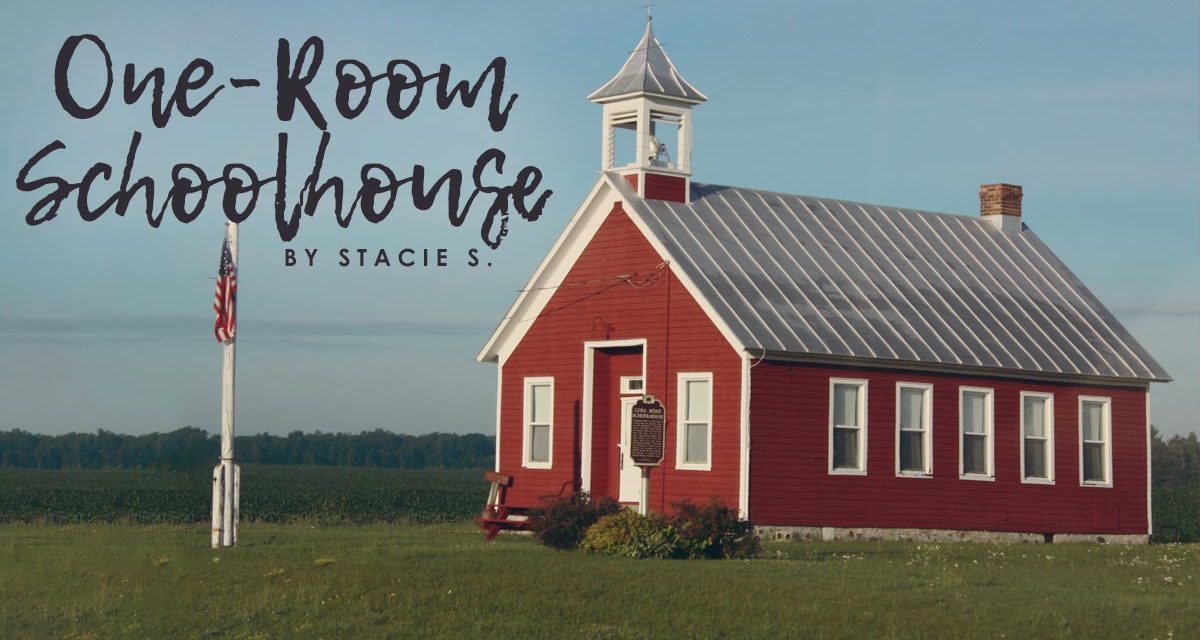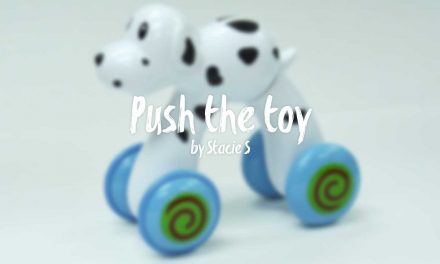Do you remember the one-room schoolhouse of yesteryear? Homeschooling in my family is a little bit like that. I’ve got a preschool, kindergarten, elementary, middle-school and high school. Both of my high schoolers are also dually enrolled in a local community college, and one will attend a university in the fall, Lord-willing.
We are the one-room schoolhouse.
I love this model of teaching my children. It fosters a sense of family education–that we learn as a family unit. Our teaching, learning, and understanding is intertwined, ebbing and flowing together. This family learning approach reinforces concepts previously taught, as my older children have the opportunity to listen in on lessons I’m teaching their younger siblings. They can recall and join in if need be.
Of course the learning works the other way, too. Little ones get to sit in on lessons those just above them are learning and are able to glean and soak up whatever their little minds can hold. It is amazing to see what they are able to learn and retain just by sitting nearby. I like to call this the “trickle-down” effect of homeschooling, where little ones are able to grasp nuggets of knowledge that trickle down upon them during our homeschool day.
I love the discussions that are born out of our time together. Because we are in the same room most of the time, a topic or question raised by one child allows all of the children to benefit from the answer. Then another can offer his or her perspective and then we find ourselves in the midst of a lovely conversation from a variety of different perspectives.
My general approach to our one-room school house day is that we all begin together. Right after breakfast we have catechism and Bible study as a family, right at the dining room table. It is one of my favorite times of the day, studying the doctrine of our Faith reading God’s Word and closing in prayer. My favorite!
Then we amble down to the basement to our school room. Next on my to-do is Math for all, according to each person’s skill level. Even though the children are completing various levels of Math, all of us working on that particular subject at once is best for this Mama’s brain. Many times, my older ones have stepped in to lend a hand in explaining a concept to a younger sibling when I’ve been working with someone else. It is an encouragement to have an older sibling say, “I’ve done that same problem before, let me help you.”
Once I have everyone up and going and have answered any Math related questions, I begin phonics/reading rotations, beginning with my youngest one and working my way up. We usually work for a solid hour or so on Math, with some reading and phonics work, rotated in. After this, my littlest ones switch over to a rotating Language Arts/Science/History routine with me, while my oldest ones work mostly independently.
All of the learning continues to unfold throughout the day, and we’re doing it all together. I have various groups and pairings amongst my children depending on what we’re working on. My children are learning early on what it means to work together, how to learn patience while waiting their turn, learning to help a sibling get through a rough day, all while academic concepts are reinforced top-to-bottom and bottom-to-top.
Even if they aren’t working directly with one another, my children enjoy learning with each other. Oftentimes, we are convinced that our homeschools must mirror the current public school set up. Not so! We are families in homes, not just students and instructors who are a part of an institutional set up. Be a family; enjoy learning together. Our family’s one-room schoolhouse learning approach is a tool that strengthens our family and keeps us close, no matter the difference in age.





